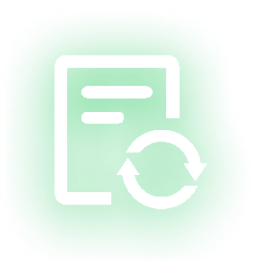Defacement monitoring is a specialized technical process that continuously tracks unauthorized alterations to website code, visible content, or structural elements to detect malicious tampering. Its core objective is to safeguard website integrity, compliance, and availability.
This proactive solution combines real-time alerts and forensic analysis to mitigate risks such as malicious code, downtime, or reputational damage. By focusing on security-driven content verification, it strengthens defenses against cyberattacks while maintaining user trust in the website’s authenticity and reliability.

How Website Defacement Monitoring Works?
• Data Initialization
Upon the addition of website monitoring tasks, immediately crawl the target page to capture complete code (HTML, JavaScript, etc.) and visual rendering results. Generate a baseline snapshot stored as a reference for future comparisons.
• Periodic Crawling
Use automated scripts to periodically fetch the latest page content. Perform differential analysis by comparing new data with historical records.
• Code Comparison
Regularly retrieve page source code and generate unique identifiers (e.g., via MD5, SHA-1 hash algorithms) to detect discrepancies between versions.
• DOM Tree Analysis
Traverse and analyze the DOM structure to inspect additions/deletions of nodes or attribute modifications.
• Visual Difference Detection
Conduct screenshot comparison to analyze pixel-level differences, revealing unauthorized image replacements or overlaid anomalous elements.
Defacement monitoring ensures accurate detection of website content tampering or malicious code injections, while maintaining audit trails for compliance and forensic investigations.
Core Concepts of The DOM Tree
Tree Structure Logic
The DOM tree is organized as a hierarchical structure, starting with the document’s root node (<html> tag). All HTML elements, attributes, and text content are represented as nodes, forming a tree-like hierarchy.
Node Types
Nodes in the DOM tree are categorized into distinct types:
Element Node: Represent HTML tags (e.g., <div>, <a>). These form the core structural components of the DOM tree.
Text Node: Store plain text content within an element (e.g., the text “Hello” in <p>Hello</p>).
Attribute Node: Define attributes of an element (e.g., “href” in <a href=”#”>).
Comment Node: Corresponds to HTML comments (e.g., <!– This is a comment –>).
Each node is identified by its “nodeType” property and can traverse parent-child relationships via properties like “parentNode” or “childNodes”, enabling efficient hierarchical traversal and manipulation.
Risks Associated With Website Defacement
Website Defacement poses significant risks, including:
• Malicious Code: Embedding trojan or virus download links into web assets to infect user devices, forming botnets or enabling ransomware control.
• Data Leak: Altering form submission addresses via malicious scripts to steal user credentials, payment details, and sensitive data.
• Compliance Risks: Attackers implanting fake ads, phishing links, or illegal content, exposing website owners to legal violations or penalties.
• Reputational Damage: Phishing pages or defaced content erode user trust in the brand and inflict financial losses on visitors.
Conclusion
Website Defacement exhibits stealth and persistence, with multi-dimensional impacts spanning brand credibility, financial security, and legal compliance. Therefore, website defacement monitoring alone serves only as a preliminary warning mechanism. To precisely disrupt defacement attack chains, it must integrate with malicious code check, data leak check, and keyword monitoring to form a multi-layered security framework.
Learn more about Defacement Monitoring
All features free for life for the first 500 users!
Sleep easy—your website is always protected!














